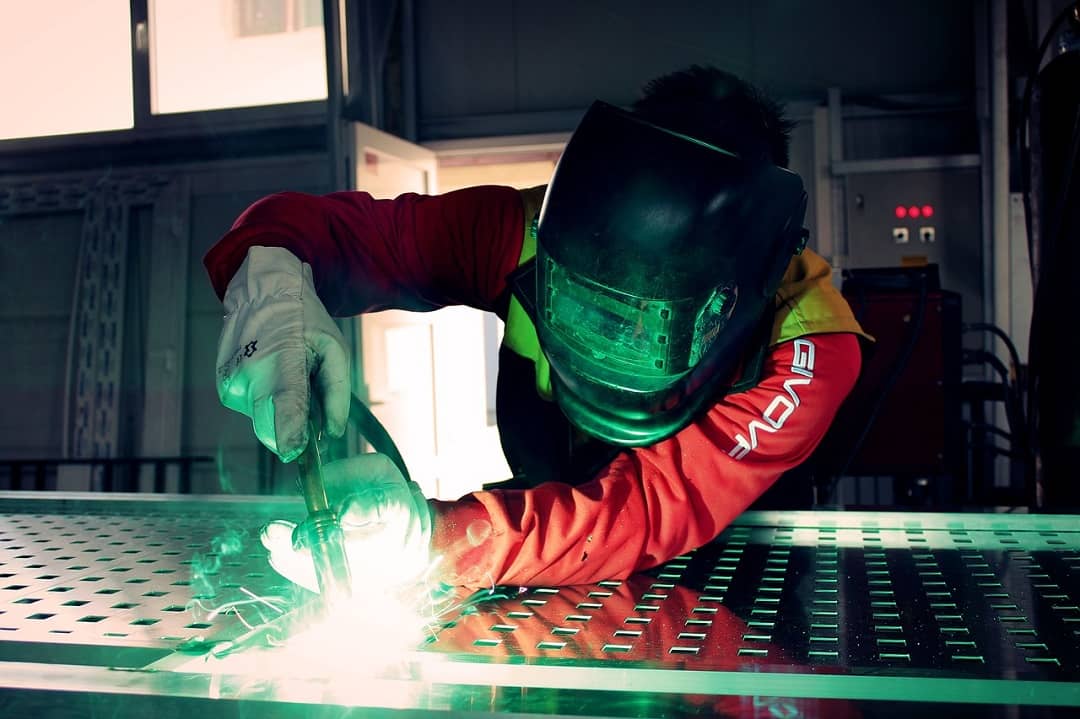Fabrication or joining processes are part and parcel in manufacturing where two or more solid elements are joined temporarily or permanently to form a single component. Welding is one type of permanent joining process where two or more materials can be joined permanently by weld bead formation. In spite of the presence of many alternatives for welding processes, including few permanent joining processes and many temporary joining processes, welding is extensively used in manufacturing industries. Technical definition of welding and explanation of crucial terms in the definition are explained in following passages.

Definition of welding
Welding is one of the manufacturing processes by which two or more similar or dissimilar materials can be joined permanently by coalescence formation with or without the applications of external pressure, heat or filler material.
Examples of welding processes
There exist hundreds of different welding and allied processes, each having certain pros and cons over another. For the sake of example, some commonly used welding processes are enlisted below. For complete list, please read: Complete list of welding processes.
- Manual Metal Arc Welding (MMAW)
- Gas Metal Arc Welding (GMAW)
- Tungsten Inert Gas (TIG) welding
- Submerged Arc Welding (SAW)
- Oxy-Acetylene Welding (OAW)
- Resistance Spot Welding (RSW)
- Resistance Seam Welding (RSEW)
- Roll Welding (ROW)
- Diffusion Welding (DFW)
- Forge Welding (FOW)
Explanation of crucial terms used for defining welding
Is it a manufacturing process? Yes. Manufacturing includes multifarious processes including Casting, Forming, Joining, Machining, Powder Metallurgy, Rapid Prototyping and Surface Working. Welding comes under joining process. Other joining processes are soldering, brazing, cotter joint, adhesive joint, fasteners, etc.
What is meant by joining of two or more materials? It is obvious that two materials can be joined by welding. However, in some cases, more than two heavy parts need to join permanently, where welding can be advantageously applied.
Why joining similar or dissimilar materials? The term ‘similar’ indicates metallurgical composition of parts to be joined is almost same. Parts with identical composition can be undoubtedly joined by welding. However, welding of dissimilar parts is also feasible. For example, stainless steel can be welded with mild steel using suitable process.
Why ‘materials’ and not ‘metals’? Materials can be broadly classified into three categories—Metals, Ceramics and Polymers. Joining of ceramics and plastics is also possible by welding, and thus, ‘material’ is logically better term than ‘metal’.
Is it a permanent joint? Definitely. Welding is a permanent joint and therefore it is not possible to dismantle the welded parts without partially destroying them. Riveting joint is another permanent joint; while fasteners, cotter joint, knuckle joint, etc. are temporary joints.
What is meant by coalescence formation? The term ‘Coalescence’ literally means a process of merging two or more droplets or particles to form a large one. Joining by welding requires localized melting or fusion of the base materials (except for solid-state welding processes). While welding, molten materials mingle to create a pool, which, when cool down, creates a solid bead. This is known as weld bead formation or coalescence formation. It is to be noted that no coalescence is formed in all those welding processes where no melting of base material occurs (solid-state welding processes).
What is expressed by ‘with or without the applications of external pressure, heat or filler material’? There exist a large variety of welding techniques; some of them require external filler material, heat and/or pressure. Every welding process may not require all these three external items, some require only one, and others require two (usually, heat and pressure are used alternatively). Application of all three external items needs only in rare unfavorable conditions.
- Read more: Classification of welding processes.